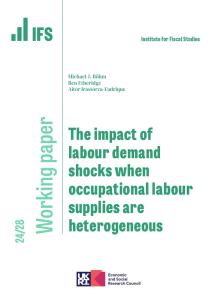It’s hard to believe, but this week’s budget will be the first in well over a year. All those fiscal events of the past 12 months were just that: mere fiscal events. The last actual, genuine, does-what-it-says-on-the-tin budget was way back in October 2021. Quite a lot has happened since then. It was, after all, delivered not by the present chancellor, nor by his predecessor, nor even his predecessor’s predecessor. Rishi Sunak was still in residence at No 11. Inflation was low, Ukraine was free, the Conservatives were comfortably ahead in the polls.
On Wednesday Jeremy Hunt will face some rather tougher challenges. Much has been made of the fact that it looks like borrowing this year will be perhaps £40 billion below the Office for Budget Responsibility’s November forecast. But don’t forget it will still be a good £40 billion or so above the forecast from a year ago.
More importantly, the OBR is unlikely to be a lot more cheerful about its medium-term forecasts and they are what define the chancellor’s room for manoeuvre. Back in November, the OBR gave Hunt essentially zero headroom against his, relatively loose, self-imposed fiscal targets. I see no reason to expect substantive change to the fiscal forecasts in a positive (or negative) direction.
What the chancellor did in November was talk a very tough fiscal game, but actually fail to deliver a fiscal forecast that met the standards of fiscal conservatism laid down by any of his recent predecessors (Kwasi Kwarteng apart). Even with some tight spending numbers pencilled in for after the next election, he couldn’t find a way to get to current budget balance — borrowing only to invest — over a five-year horizon. He met his desire to have debt falling in the final year of the forecast period by a fiscal hair’s breadth.
So ignore those who say that there is money kicking around to be spent on permanent tax cuts or spending increases. Unless the OBR springs a pretty big forecasting surprise, there isn’t.
So what can the chancellor do? Extending the £2,500 cap on the average household energy bill for another three months would be easy. The cap is due to rise to £3,000 in April, but with energy prices down and expected to fall below the £2,500 mark by the summer, extending support would involve a manageable one-off cost of about £3 billion.
Yet again failing to adjust fuel duties to take account of inflation and failing to reverse the, supposedly temporary, 5p-a-litre cut introduced a year ago would not be a one-off cost. If, as is widely expected, Hunt does keep duties where they are, it will knock a pretty serious £6 billion annual hole in the public finances. With petrol prices more than 40p a litre down on last year’s peak, surely the time has come actually to implement stated policy, reverse the temporary cut and adjust for inflation.
It’s not going to happen, of course, which will be quite the statement of priorities — £6 billion would probably be enough to reduce the real-terms pay cut on offer to nurses and teachers so that further strike action could be averted. If we can find £6 billion for motorists, we could have found £6 billion for nurses and teachers.
Another priority for Hunt is likely to be to try to do something about the hundreds of thousands of fifty and sixtysomethings disappearing from the workforce. Here he has my sympathy. It is a tough ask.
There seem to two things driving the change. People with plenty of their own money deciding to retire early; and people getting too sick to work. The government has limited tools at its disposal to influence either group, at least in the short run. We might see some changes to limits on pension tax relief. An increase in the annual allowance especially would be welcome. But don’t expect that to have a great big effect on retirement decisions.
Then there is the question of whether we will get any mitigation of the effects of previously announced policies. One of the main reasons that disposable incomes will continue to fall over the rest of this year is that income tax allowances and thresholds are set to be held constant once again. When inflation is high, that means more income gets dragged into tax and into higher rates of tax.
So the tax burden rises and real incomes decline. Given that this is a pretty well-hidden tax increase and that any serious mitigation would be expensive, we might not expect any policy change here.
But don’t ignore it. For most of us, this continued freezing of allowances and thresholds represents the biggest tax increase in a long time.
The other big tax rise due in April is the increase in the main rate of corporation tax from 19 per cent to 25 per cent. Make no mistake, that is a big and potentially damaging change. Our corporate tax take is likely to rise to among the highest in the developed world. So we might well see some additional reliefs introduced to mitigate its effects and increase investment incentives. If we do, though, I’m not sure I’ll be able to raise much of a cheer. Staggering from budget to fiscal event to budget making tweak after tweak is no way to make corporate tax policy. A clear, long-term strategy is needed. It does not exist.
On the bright side, this feels like a relatively normal budget. No pandemic, the mini-budget fiasco fading into blissfully distant memory. But if growth doesn’t start to pick up pretty soon, neither this one nor the next will contain many goodies. A stagnant economy leaves little room for either more spending or less tax.
This article was first published in The Times, and is reproduced here with kind permission.










